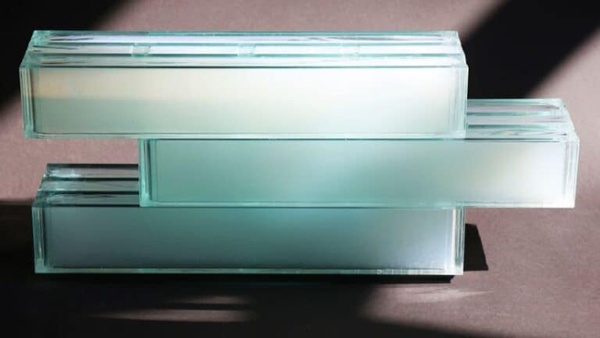Many of us had our first lesson in materials innovation as children when we heard the story of The Three Little Pigs and learned that while straw and sticks couldn’t survive the onslaught of the Big Bad Wolf, a house made of bricks stood firm. Since the time that tale was written, materials like concrete, steel and glass came to represent innovation in the form of soaring skyscrapers and sprawling industrial facilities.
But today, those stalwarts are seen as “traditional,” while newer, innovative materials are pushing the boundaries of what’s possible.
Materials are usually thought of as inert substances that we manipulate to make or augment things. But what if the materials can be reactive? What if they’re “smart”?
The stuff of science fiction is rapidly coming to life as the chemical and materials industries are evolving and innovating. Increasingly, researchers and manufacturers are discovering how to integrate digital and smart characteristics into materials, enhancing critical functionalities like heat resistance, tensile strength and corrosion resistance.
Better materials are in the making
In the chemicals industry, there is always a need to devise better protective materials, especially coatings that can prevent corrosion and other types of degradation. Protective coatings are especially important for steel, which is used so widely given its relatively low cost and high performance. Yet unfortunately, this mighty alloy is easily subject to corrosion.
A paper in Nature recently revealed the development of a bio-inspired, self-healing and anti-corrosion waterborne polyurethane (WPU) coating that boasts enhanced tensile strength, damage resistance and anti-corrosion performance. Most impressive, perhaps, are its “self-healing” properties. The paper’s authors explain that “Importantly, due to the reversibility of the hydrogen bonding array, the fractured WPU can easily heal and restore its original mechanical properties when subjected to heating at 50 °C.”
They go on to note that the coating “presents a revolutionary solution for creating multi-functional, high-performance smart material in harsh..Read More Here
AEC News You Can Use Blog
Building Materials
Exclusive content for the architectural, construction and engineering industries
- Tom Taubenheim
- May 22, 2024
- Tom Taubenheim
- January 31, 2024
- Tom Taubenheim
- July 19, 2023
The smart materials revolution is here-Elsevier
Topics: Building Materials
The cost of these 5 construction materials grew the most in 2023-MP
After three years of intense growth, costs for some construction materials have begun to normalize — but other materials and equipment are becoming more expensive.
Machinery Partner used Bureau of Labor Statistics data to identify which construction materials underwent the steepest price increases over the past year. The analysis considered 30 products from the BLS Producer Price Index.
The COVID-19 pandemic caused a 39.6% spike in overall input construction costs since February 2020, according to an Associated Builders and Contractors analysis of BLS PPI data. Work stoppages, raw materials shortages, and transportation issues at the height of the pandemic caused supply chain collapses that drove up prices for builders.
As some supply issues have improved, prices have cooled. Nonresidential construction input prices fell 1.1% over the past year, according to an ABC analysis. However, many individual commodities are increasing in price, particularly heavy materials that are more expensive to transport, according to construction cost data provider Gordian
High construction prices, higher mortgage interest rates, and higher labor costs have led to a 17% drop in the construction of new single-family homes despite consistent demand.
Construction projects centered on infrastructure are better positioned as government money from the Infrastructure Investment and Jobs Act comes online. However, the law's "Build America, Buy America" clause requires builders to use American-made iron, steel, and other construction materials for these infrastructure projects. Certain experts and contractor groups fear these infrastructure rules may cause prices to increase even more. The transition to greener buildings also creates more demand — and therefore increases prices — for materials used in more energy-efficient construction.
Inflation has contributed to increased prices for many construction materials, including clay products, per LBM Journal. More megaprojects, including two manufacturing plants in Georgia totaling $6.7 billion, also create more demand, causing price increases.
Higher transportation costs aren't the only element plaguing concrete prices. Its production is a big culprit in..Read More Here
Topics: Building Materials
In the ever-evolving world of construction, new and innovative building materials are constantly being introduced to revolutionize the industry. These materials not only offer improved durability and strength but also provide numerous advantages and benefits.
Topics: Building Materials
Heading Module -CTA Title
Lorem ipsum dolor sit amet, consectetur adipiscing elit. Suspendisse varius enim in eros elementum tristique.
Lorem Ipsum
Aenean leo ligula, porttitor eu, consequat vitae, eleifend ac, enim. Aliquam lorem ante, dapibus in, viverra quis. Aenean leo ligula, porttitor eu, consequat vitae, eleifend ac, enim. Aliquam lorem ante, dapibus in, viverra quis



